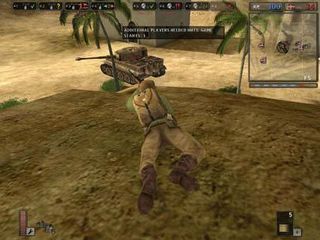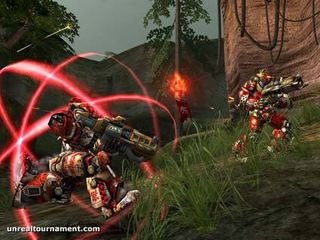THG Graphics Card Buyer's Guide
DirectX Technology
DirectX 7 Class

The 3D engine of the game Battlefield 1942 sits solidly on a DirectX 7 foundation. Through the clever use of textures, the developers really squeeze a lot out of the engine, but the in-game world is very static; dynamic lighting is not possible, for example. Another very popular DX7 game is Counter-Strike.
Games such as Quake 3 (OpenGL), Unreal, and even comparatively recent games such as Battlefield 1942 belong to this generation. Almost all effects in these games are realized through simple textures. Aside from transformation and lighting (T&L), these cards are not programmable. In fact, not all graphics processors of this generation even offer T&L support; for example Intel's integrated i865G or ST Micro's Kyro II.
DirectX 8 Class

Unreal Tournament 2003 uses a number of DirectX 8 shader effects. As a result, the game's graphics look much better than that of older games, and the in-game world seems more alive.
Graphics processors truly began to become programmable starting with DirectX 8. There are two capabilities that need to be taken into account here, namely pixel and vertex (=geometry) calculations through shaders. DirectX 8 incorporated several different pixel shader models (SMs), which support varying levels of programmability (PS 1.0, 1.1 and 1.2 are part of DirectX 8, while PS 1.4 was added in DirectX 8.1). At first, the complexity of the shader programs was quite limited, but their complexity has increased with the newer shader models. There is only one vertex shader model that is shared by both DirectX 8 and DirectX 8.1: Vertex Shader 1.0.
Stay on the Cutting Edge
Join the experts who read Tom's Hardware for the inside track on enthusiast PC tech news — and have for over 25 years. We'll send breaking news and in-depth reviews of CPUs, GPUs, AI, maker hardware and more straight to your inbox.
Most Popular

